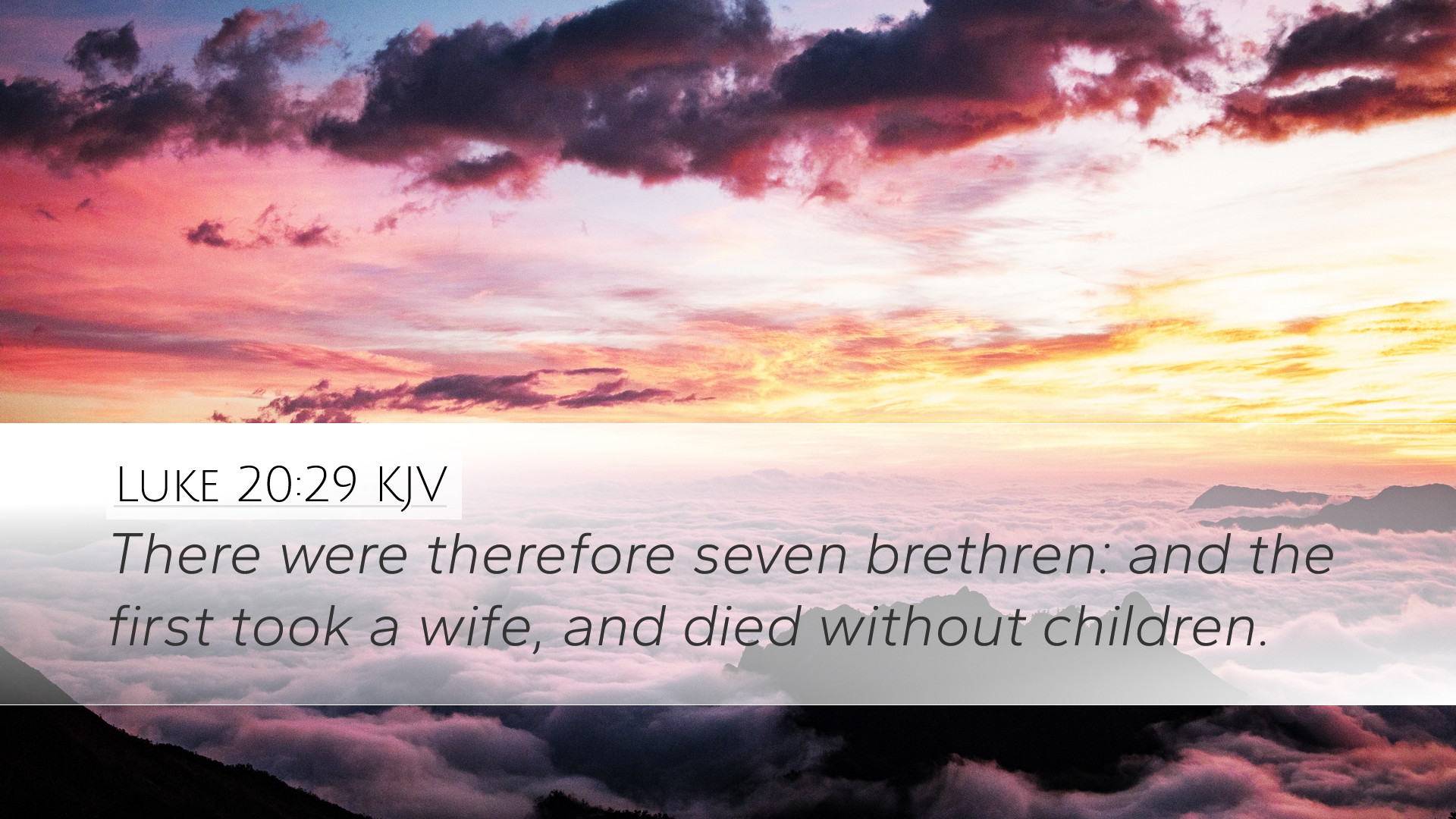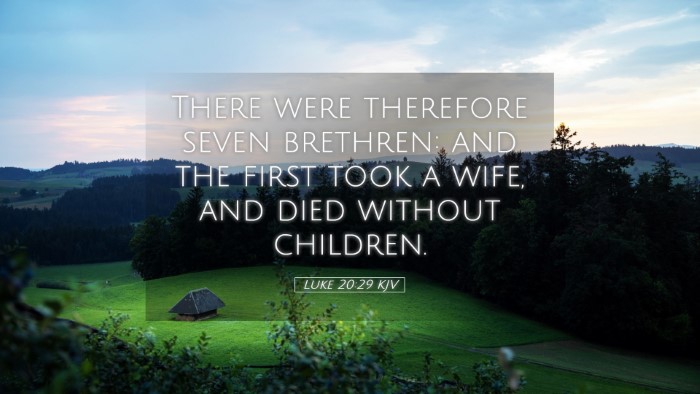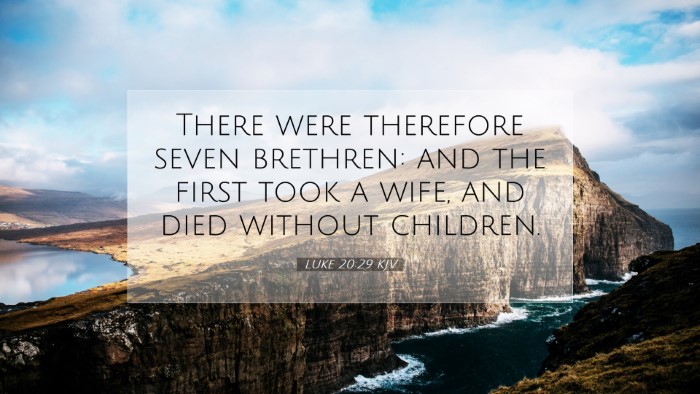Commentary on Luke 20:29
Luke 20:29 states: "There were therefore seven brethren: and the first took a wife, and died without children." This verse finds its place in a challenging discourse between Jesus and the Sadducees, reflecting the deep theological rift between those who believe in the resurrection and those who do not. The following commentary is an amalgamation of insights from respected public domain sources, providing a multi-faceted view of the text.
Context of the Verse
The passage occurs within the framework of one of Jesus' final debates before His crucifixion. The Sadducees, known for their strict adherence to the Torah and disbelief in the resurrection, challenge Jesus with a hypothetical scenario regarding levirate marriage (Deuteronomy 25:5-10). Their intent is to undermine the doctrine of resurrection, a cornerstone of Christian faith. The context emphasizes the tension between earthly traditions and divine revelation.
Analysis of the Verse
In this verse, the Sadducees present a legalistic interpretation of the Mosaic law concerning marriage. Matthew Henry notes that the number seven may imply completeness, highlighting their argument's absurdity by extending it unrealistically. By using this example, the Sadducees aim to mock the concept of resurrection, suggesting that if a woman is married to multiple men in succession due to the levirate duty, whose wife will she be in the afterlife?
Theological Implications
The Sadducees' question challenges not just the doctrine of resurrection but the understanding of life after death itself. Albert Barnes emphasizes that their reasoning is rooted in a misunderstanding of God's power and the nature of the afterlife. In the resurrection, mortal institutions such as marriage will transform into something greater, reflecting God's eternal kingdom where earthly concerns dissipate.
Marriage in the Afterlife
The challenge raised by the Sadducees implies a view that resurrection merely continues earthly existence. Adam Clarke remarks that, in heaven, the nature of relationships will change significantly. While social structures like marriage serve purposes on earth, in the resurrection, believers will be like the angels, living in perfect unity with God and each other, free from the limitations of earthly life.
Cultural and Historical Context
The levirate marriage law offered pragmatic solutions to preserve family lines within the Israelite culture, which can simplify understanding in reading this passage. The Sadducees capitalize on a well-known cultural practice to weave a narrative that appears valid on the surface, yet spiritually misguided. Understanding this cultural backdrop is crucial for contemporary readers to grasp the absurdity of their challenge.
Lessons for Believers
This exchange between Jesus and the Sadducees serves as a powerful reminder of the need for deep theological understanding. Rather than engaging in mere legalistic arguments, believers are called to grasp the essence of God's promises. Key takeaways include:
- The Transformative Nature of Resurrection: Unlike earthly existence, resurrection life bears qualities suited for eternity.
- The Limitations of Human Understanding: The reliance upon human reasoning can lead to misrepresentation of divine truths.
- The Need for Faith: True belief transcends established norms and recognizes the authority of Scripture.
- God's Sovereignty Over Life and Death: God's ability to grant life beyond physical existence emphasizes His power.
Conclusion
Luke 20:29 and the subsequent verses challenge believers to rethink their perspectives on life, death, and resurrection. By drawing upon insights from Matthew Henry, Albert Barnes, and Adam Clarke, this commentary encourages deeper theological reflection while emphasizing the importance of faith in understanding God's promises about eternal life. The Sadducees serve as unwitting vessels illustrating the need for divine revelation over human logic.


